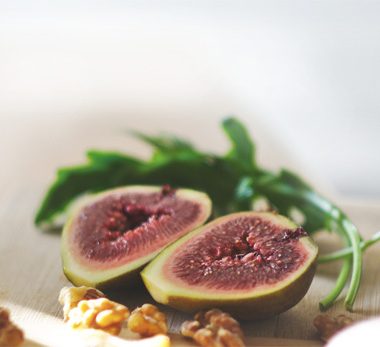The Hidden Benefits in Citrus Fruits

Citrus fruits are well known for providing ample amounts of vitamin C . But they also supply bioflavonoids, substances that are not required for life but that do improve health. The major bioflavonoids found in citrus fruits are diosmin, hesperidin, rutin, naringin, tangeretin, diosmetin, narirutin, neohesperidin, nobiletin, and quercetin.
This article addresses the first bioflavonoids – diosmin – and includes an honorable mention of hesperidin and naringin. Citrus bioflavonoids and related substances are widely used in Europe to treat diseases of the blood vessels and lymph system, including hemorrhoids , chronic venous insufficiency, leg ulcers, easy bruising, nosebleeds, and lymphedema following breast cancer surgery. These compounds are thought to work by strengthening the walls of blood vessels.
The pith of oranges and other citrus fruits is the stringy, spongy white stuff between the peel (or zest) and the fruit. Many people peel it away before eating oranges, because it can be bitter or difficult to chew. More often, orange pith is chewy and tasteless not bitter. And, once you know it’s benefits, you may be less likely to discard Nature’s medicine – particularly diosmin.
Diosmin from the white pith of oranges can effectively increase micro-circulation in the body by increasing lymphatic contractions. One small-scale human study shows diosmin may bring relief to breast cancer patients suffering from secondary swelling (lymphodema) caused by radiation treatment. In women suffering from severe lymphodema, diosmin increased lymphatic migration speed by six times greater than the control group.
Diosmin has been shown to improve the tone and health of veins, reduce swelling in the calves and ankles, reduce pain and fatigue in the legs, and even alleviate the symptoms of restless leg syndrome. Many health experts consider diosmin to be the only effective treatment for many of the symptoms associated with lower circulatory problems. In addition, preliminary research indicates diosmin may also help combat diabetes and certain cancers, reduce the risk of neurological diseases, help with women’s reproductive health problems, and prevent swelling (lymphodema) and chromosomal damage associated with radiation treatment.
Preliminary studies indicate that diosmin may also play a role in preventing neurological diseases like Alzheimer’s and autism. In a study conducted on mice, researchers found that orally-administered diosmin reduced the number of soluble and insoluble beta-amyloid plaques by 37 and 46% respectively. Diosmin along with another closely related compound, luteolin, may inhibit an enzyme implicated in the development of beta-amyloid plaques known as glycogen synthase kinase 3, and has been linked to several disorders of the central nervous system.
Pith also contains assorted flavonoids, including hesperidin, which may help blood vessels function (think varicose veins) better and may reduce inflammation. Another flavonoid found in oranges, including the pith and peel as well as the fruit, is naringin, which has antioxidant and anti-inflammatory effects and some ability to reduce carbohydrate absorption from the intestinal tract, reducing quick rises in blood sugar after eating. It’s high fiber may also help lower cholesterol level, have some beneficial effect on weight management and metabolic syndrome – a combination of risk factors for stroke, type 2 diabetes, and heart disease.
And, surprisingly it contains as much vitamin C as the fruit itself. Orange zest is also high in fiber and flavonoids as well as vitamins A, C, B5 and B6, plus calcium, riboflavin, thiamin, niacin and folate. However, it can be difficult to digest, and should only be grated into dishes when it comes from organic oranges. The peel of conventionally-grown oranges is likely to contain pesticide residues that can’t be washed away.
Safety issues:
The citrus bioflavonoid tangeretin may reduce the effectiveness of tamoxifen, a drug used to treat breast cancer.
_____
Research
Feldo, Marcin et al. “Influence of Diosmin Treatment on the Level of Oxidative Stress Markers in Patients with Chronic Venous Insufficiency” Oxidative medicine and cellular longevity vol. 2018 2561705. 28 Aug. 2018, doi:10.1155/2018/2561705
Imam F., Al-Harbi N. O., Al-Harbi M. M., et al. Diosmin downregulates the expression of T cell receptors, pro-inflammatory cytokines and NF-κB activation against LPS-induced acute lung injury in mice. Pharmacological Research. 2015;102:1–11. doi: 10.1016/j.phrs.2015.09.001.
Pecking AP, Fevrier B, Wargon C, Pillion G. Efficacy of Daflon 500 mg in the treatment of lymphedema (secondary to conventional therapy of breast cancer). Angiology. 1997 Jan;48(1):93-8.
Perrin M., Ramelet A. A. Pharmacological treatment of primary chronic venous disease: rationale, results and unanswered questions. European Journal of Vascular and Endovascular Surgery. 2011;41(1):117–125. doi: 10.1016/j.ejvs.2010.09.025
Rezai-Zadeh K, Shytle RD, Bai Y, Tian J. Hou H et al. Flavonoid-mediated presenilin-1 phosphorylation reduces Azheimer’s disease beta-amyloid production. J Cell Mol Med. 2009 March; 13(3): 574-88.
Silambarasan T., Raja B. Diosmin, a bioflavonoid reverses alterations in blood pressure, nitric oxide, lipid peroxides and antioxidant status in DOCA-salt induced hypertensive rats. European Journal of Pharmacology. 2012;679(1–3):81–89. doi: 10.1016/j.ejphar.2011.12.040.







